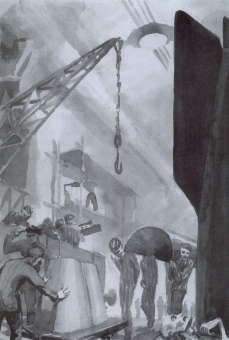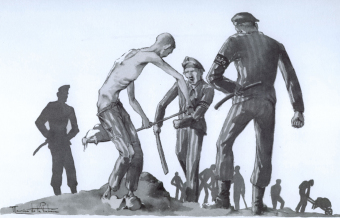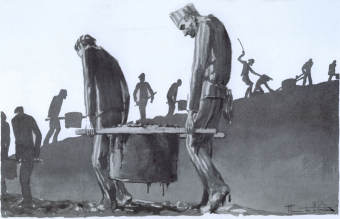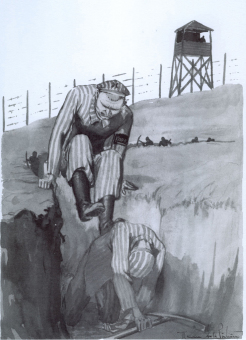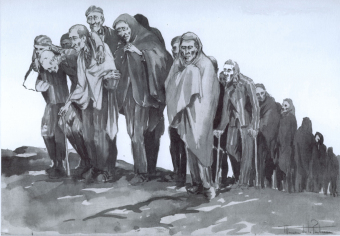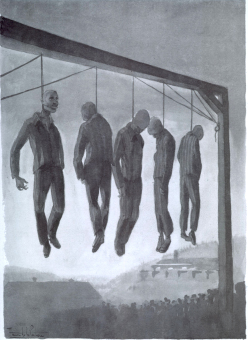Maurice de la Pintière: Pictures of Mittelbau-Dora
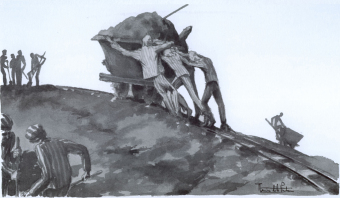
© Maurice de la Pintière papers
For Peter Wolff, a survivor of the Buna/Monowitz concentration camp and until his death in 2007 a participant in creating the Norbert Wollheim Memorial, Maurice de la Pintière’s paintings expressed the prisoners’ living and working conditions most starkly. He emphasized the expressiveness of the group of prisoners with the mining cart in particular.
Maurice de la Pintière, bornin Vouvant in the Vendée region on July 6, 1920, learned as a child to appreciate caricature and painting in watercolors. He enrolled at the Ecole nationale des Beaux-Arts in Paris in 1940 to study academic and anatomical drawing. In 1943, he joined the French résistance and, along with his group, was arrested by the Germans at the Spanish border in June 1943. From the Buchenwald concentration camp, de la Pintière came to the Mittelbau-Dora concentration camp in November 1943. He was able to survive there because a Kapo took an interest in his drawings and put him in a work detail that painted barracks. After the Mittelbau-Dora concentration camp was evacuated, Maurice de la Pintière was taken to the Bergen-Belsen concentration camp and freed there on April 15, 1945. Immediately after his liberation, he came down with tuberculosis, and during his convalescence he drew pictures of the memories that haunted him.
These pictures show gaunt prisoners in their striped suits. From the soft contours of the background, painted in watercolors—often silhouettes of thin, stooped fellow inmates—scenes of the utmost savagery emerge in the foreground. The shadowy mass of prisoners moves past below the distorted faces of prisoners who have been hanged; with all his might, a leather-booted Kapo jumps on a prisoner who is digging a pit; in the underground mine, a prisoner dies while the others are forced to do their heavy labor. Especially the faces of those depicted are often harshly outlined and angular. In their expressive strength, they testify to the simple lines of de la Pintière’s training as a caricaturist. The pictures, kept exclusively in tones of gray, evoke the oppressive, dismal atmosphere of the camp—in this case, the Mittelbau-Dora concentration camp—with the help of columns of beaten, abused prisoners.
Maurice de la Pintière returned to his profession of cartoonist and painter after his liberation. He suffered throughout his life from the consequences of his time in the camps; his tuberculosis flared up repeatedly and kept him from working for long periods. He died in 2006.
(SP; transl. KL)



















